Oh wow, you’re a contestant on the new game show, Set Your Fees! Let’s listen in on the cheesy announcer. He seems to be giving you a choice of three doors.…
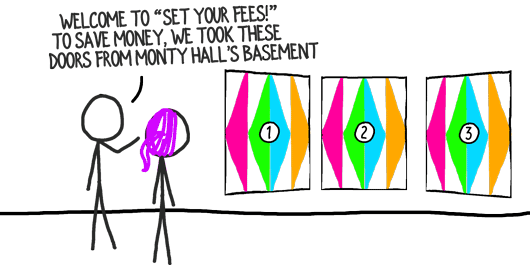
“Door #1 is sponsored by Recession. Faced with uncertain revenues and reluctant prospects? Lower your consulting firm’s fees, to help you lock in projects!
“Or choose Door #2, sponsored by Inflation. Personnel are 40-60% of your consulting firm’s expenses, and your folks are demanding higher wages. Plus, the cost of everything else is going up, up up. If you want to stay in business and make a profit, you’ll need to raise your fees!
“Perhaps Door #3, whose sponsor is… uhm… it’s scratched out and hard to read… ah yes, it’s Confusion. Not sure what to do? Close your eyes, don’t change anything and pray for the best!”
The countdown music is playing, the audience is shouting… the pressure is on! Which door should you choose?
While you’re deliberating, think about this:
There are two schools of consulting buyers: Price Buyers and Quality Buyers.
Both schools will choose the consulting firm that offers highest value, but their definition of value differs.
Price Buyers: Best Value = good enough quality at the lowest possible price.
Quality Buyers: Best Value = highest possible quality at a reasonable price.
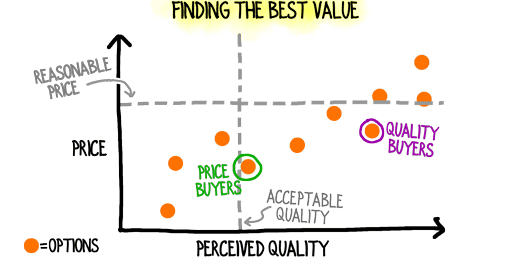
The two schools also have different tendencies when faced with financial hardship:
Price Buyers save money by spending less on everything. They accept lower quality.
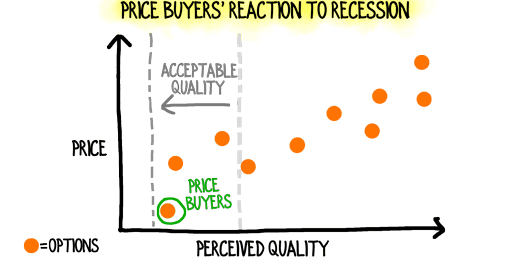
Quality Buyers save money by reducing the number of investments. They invest more in the few things that will have the greatest impact, and accept higher prices.
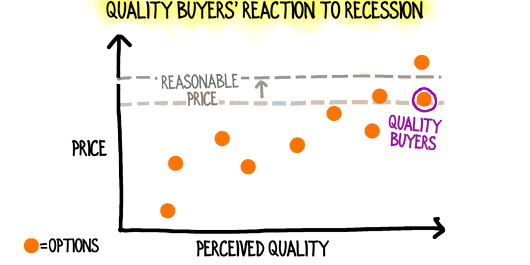
Of course, there’s a large contingent of consulting buyers who wander between those schools. During good times, they’re willing to swing toward high quality, as long as the fee isn’t crazy. During lean times, their desire to conserve cash shifts their preference to low fee offerings.
When recession winds blow in your consulting firm’s face or other downturns rattle your confidence, remember that there are always Quality Buyers. The number of adherents to that school may dwindle, but the school doesn’t close.
Also, financial downturns don’t affect everyone uniformly. There will always be segments and individual prospects in your market that are growing, thriving, and looking for help from a kick-butt consulting firm like yours.
Remember, there are always Quality Buyers.
The game show music has stopped and it’s time to make a decision.
You know that turning to Door #1 is a losing game. There’s no guarantee you’ll be the lowest price. If you do win, you’ll struggle to deliver work your consulting firm is proud of at an acceptable profit.
Plus, it’s difficult to recover from a price-cutting precedent.
You choose Door #2. You raise your fees.
The audience cheers! They’re ecstatic.
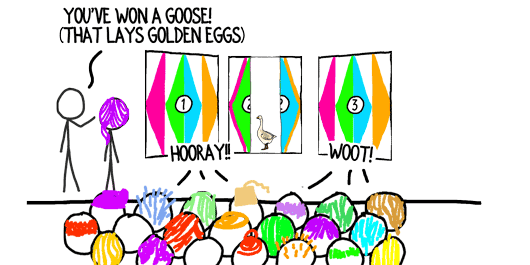
But are you thrilled?
More likely you’re nervous. Anxious. Perhaps, deeply concerned about revenue. And rightly so.
Winning consulting projects at higher fees during economic busts requires more dedication, effort, discipline and precision than during boom times.
Yes, raise your fees in the months ahead, and also commit to a four-part mantra:
Four-Part Inflation/Recession Reaction Mantra
Ubiquity
“I will make my consulting firm more visible to Quality Buyers.”
Discernment
“I will identify and pursue high-performing segments and prospects.”
Consequence
“I will ensure my consulting firm’s offerings are meaningful and address high-priority problems.”
Excellence
“I will upgrade and pamper my Business Development engine, so that I engage in more productive conversations and my opportunities yield more, closed projects.“
Each element of that mantra deserves more exploration, and we’ll talk about them in future articles.
In the meantime, steel yourself to choose Door #2 and raise your fees.
The fanfare will blare, the confetti will flutter down and the audience will love you. So will your consulting firm’s bottom line and, most importantly (and perhaps surprisingly), so will your clients.
Are you planning to raise your fees as much of the world potentially enters a recession?
Text and images are © 2024 David A. Fields, all rights reserved.

 David A. Fields Consulting Group
David A. Fields Consulting Group 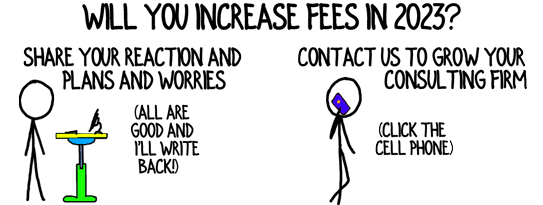

Another brilliant article, David. Thank you.
And thank you, Lilian, for your feedback. If it weren’t for smart readers like you giving input, I’d never know what’s helpful and what isn’t!
I raised my prices three times this year for new clients and SOW renewals. Next year I’ll bring all clients up to the new rate. If clients want to drop off at that point after experiencing our high quality consulting, I know they’re not the right clients for us as they’re price sensitive and focused on price and not quality.
Good on you, Susan! Your confidence and your actions are inspiring. As you said so eloquently: if clients aren’t willing to pay your fees, they’re probably not the right clients!
I appreciate your providing a case study example, Susan.
Very timely and helpful article. Thanks David. I’m off to find some more Quality Buyers!
Outstanding, Dave. I appreciate your feedback and also the example you set. You already attract quality buyers, and focusing more on that school will serve your firm well.
Thanks for chiming in today!
David, I’ve raised my basic retainer twice in the last year. It seems to attract a better level of client that is easier to work with and frequently refers prospects. I’ve had a few candid conversations with them and they all say the higher price makes them believe I have more to offer them and deliver better outcomes. Human psychology is a strange and wonderous thing.
You’re right, Jerry. There’s a distinct, well-documented relationship between price and perceived value. In fact, some pricing studies specifically ask, “At what price would you start to question the quality of this offering?” Kudos to you for raising your fees and enjoying better clients as a result.
You’ve provided a great example of smart pricing, Jerry, and I’m very glad you took a minute to share it.
Hi David, I agree with Jerry. In over 15 years of private practice Anytime I’ve given a discount or deal I’ve always ended up working harder and was less appreciated. People who want discounts tend to be have quite outrageous expectations and are the hardest to please. I don’t know why, but that has been my anecdotal experience.
Your experience is in line with what most consultants face. The most penny-pinching prospects frequently turn into the least enjoyable, lowest margin, highest effort clients.
I’m happy you shared your experience, Elaine. It will confirm for many other readers what they’ve encountered and how they can respond.